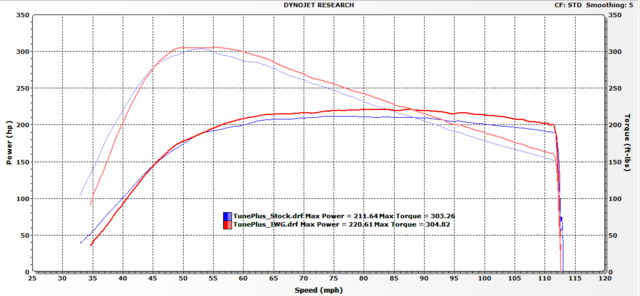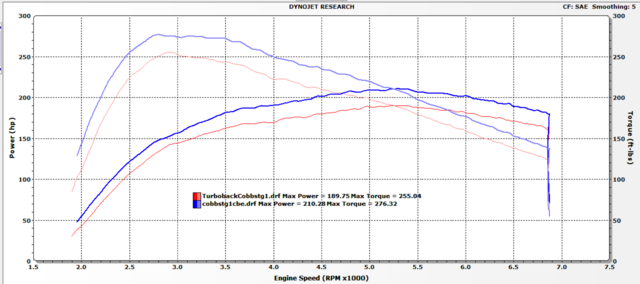Adam, in regards to an upgrade path, where would you position this IWG actuator considering that my planned next steps are FMIC + chargepipes? Would the IWG actuator be a positive incremental upgrade to be done first? A sub $200 upgrade is a no-brainer in my book. Or better just to wait until the FMIC is installed. I am no expert, but I can clearly see how you've been able to smoothly increase the progression of HP and TQ delivery.
I personally did it right after I did the tune. This is how I have the upgrade path structured for my customers on my facebook group.
www.facebook.com/groups/ecoboostsupport
Tune>Intercooler>Tune+ Internal Wastegate Actuator>Catback>Intake>Chargepipes
You can swap the intake and charge pipes around as the chargepipes are low on HP but help a lot with boost leaks and the charge pipes blowing out.
Honestly, if you are in a area that has rather mild climate (80° and under) you can move the IWG in front of the intercooler. Personally, if it is in the budget, tune/intercooler/iwg should be done all at once.
This? Still doesnt answer why the Fiesta responds the way it does but many other turbo cars see the opposite effect.
The other thread you posted seems to be a million pages long but has some juicy details. I will peer into this thanks for the time Adam.
No problem. I put a lot of details in that thread, it is worth the read.
I think what he's trying to convey is that these baby turbos run out of breath too soon with a large downpipe. These little guys spin VERY fast. I was once told exactly how fast, but I can't recall off hand. That larger piping allows it to spin up too far, too quickly and it gets hot enough to be pushed near its limits.
Idk, man. I'm just guessing based on what was said.
While it's hard to believe, I wouldn't be surprised if the aftermarket just up and went with the tried and true 3" downpipe. But, even 2JR found that a reduction down to 2.5 produced more power than a straight 3" pipe. I don't completely doubt the legitimacy of Adams findings. I'd just really like to know the "how" behind it.
Exactly, let me see if I can break this down a little easier so you don't have to read through a bunch of data. Below is not actual data, but more of a picture to show what my theory is on why the downpipe loses power, or at least doesn't promote it
on the stock turbo.
The one thing I noticed was the torque came on a little sooner with the catless downpipe, however it did not reach the same peak. What this tells me is that the efficiency of the turbo was increased, but it had a negative effect as it reached peak exhaust mass earlier in the rpm which allowed for torque to drop sooner. The longer you can maintain torque the higher your HP is going to be at max value (5252rpm). Because HP = (TQ*RPM)/5252 the lower the torque, the lower the horsepower is going to be. When you have a dynograph like the below from my Fiesta, you can see why HP is going to be lower. For smaller turbo vehicles with high VE, it is actually better for you to slow down exhaust mass so the turbo can spin slower to allow a flatter torque curve. The backpressure of the factory downpipe allows for a slower turbo shaft speed. Which, the higher the rpm of the turbo, the hotter the air. The hotter the air, the less dense it is. That is another reason why colder ambient temperatures can produce more power. Density, and detonation prevention which is both based on the temperature of the air.
Dynograph below is turboback exhaust, versus just a catback. They are labeled accordingly. Both are utilizing the Cobb Stage 1 tune to keep the calibration variable the same.
So, the exhaust is just enough additional flow to find the happy medium. I actually disconnected the muffler from the MAPerformance catback and it loss power. I ran open factory downpipe, and it lost EVEN MORE power. So, all test/scenarios gave me more confirmation on my theory about downpipes.
Yes! Thank you. I am not arguing against or for Adam just wanna know the "how" as well. As far as Im concerned screw the downpipe but I still wanna know the "how" of this. Obviosuly its the tiny turbo at play but I like to know the ins and outs.


